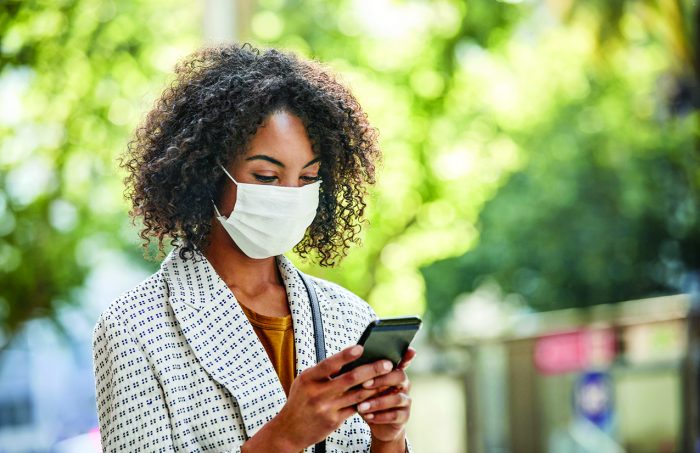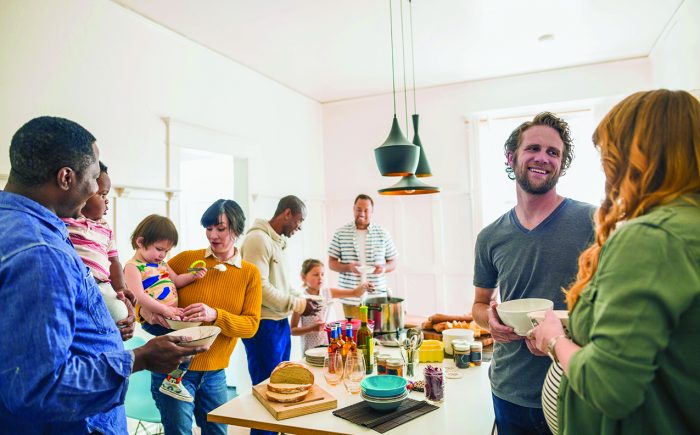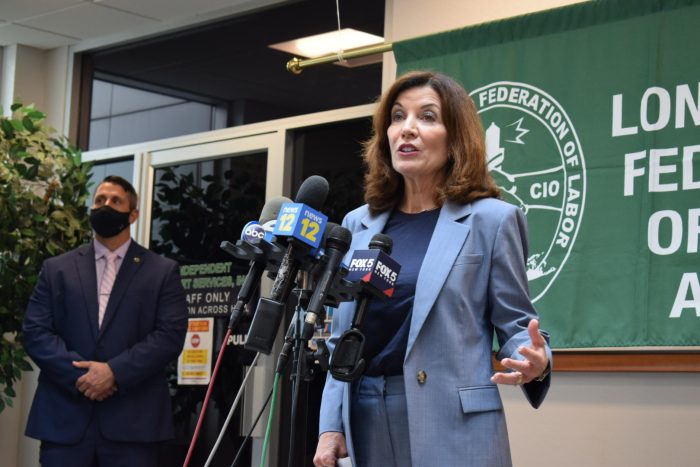As students went back to school after the winter break, a spike in COVID-19 cases caused widespread absences fueled by the Omicron variant.
As of Monday, Suffolk County has experienced a 24.1% positivity rate, according to the New York State Department of Health.
These numbers come just one day before Gov. Kathy Hochul (D) announced that the state will be ending contact tracing for the virus. She said that keeping up with the number of cases is “nearly impossible” with the Omicron surge and the focus should rather be on vaccinations and testing.
“We have 12,000 new cases a day. It is almost impossible to do contact tracing the way we have been in the past,” Hochul said at a news briefing in Manhattan Jan. 11.
The county has yet to announce if it will also stop contact tracing on the local level.
But to continue keeping children safe in their schools, some North Shore districts have implemented new protocols, on top of mask wearing, social distancing and virtual learning.
Elwood
In a statement from Elwood school district, Superintendent Kenneth Bossert said that at the high point of the COVID surge, which was immediately following the holiday break, the district had approximately 200 students isolated or in quarantine.
“Any student who is directed to isolate or quarantine due to COVID-19 has the opportunity to work remotely in Elwood, K-12,” he said.
Northport-East Northport
Residents in the Northport-East Northport community received a letter from Superintendent Robert Banzer last week providing an update on some changes that took place due to the surge.
At the time of the notice, which was sent out Jan. 7, the quarantine and isolation expectations for students and staff reduced for positive cases from 10 days to five days as long as the conditions in the guidance are met. These changes to quarantine protocols are also outlined and are based on vaccination/booster status.
For remote learning while quarantining, Banzer expressed his sympathy noting, “We understand that remote learning is not ideal,” but some changes were made for students to learn while at home.
High school and middle school students were updated on the district’s virtual quarantine support schedule, which provides periodic access to a subject area teacher throughout the day. Elementary students were granted increased access to their quarantine support teacher.
“A key difference between virtual quarantine support versus livestreaming a classroom (aka: turning the camera on in the classroom) is the ability for students to interact with a teacher and ask questions, which is not typically possible with a traditional livestreaming approach,” he wrote. “This creates conditions that allow for full attention on students; the large majority who are present in class, and those who are online seeking virtual assistance from the subject area teacher.”
The district, along with others on Long Island, was given testing kits for students and staff to conduct at home, as well as community testing to take place on Wednesdays from 9 a.m. until 5 p.m. at the Bellerose Avenue location.
Smithtown
Smithtown schools are prioritizing in-person instruction, according to Superintendent Mark Secaur.
“We strongly believe it to be superior to remote learning,” he stated. “That said, we do allow for remote learning via livestreaming for students who are unable to attend due to COVID-related quarantine and isolation requirements.”
He said he believes the district offers a safe in-person learning environment, so it has not allowed for students to “opt-in” to a remote environment unless they are forced to miss school due to a COVID quarantine or isolation period.
Three Village
In a letter sent to residents, the Three Village School District has continued to keep students spaced at 3 feet and 6 feet when in the cafeteria. Plastic barriers can be put up if requested by the family, but none are being distributed to all at this time.
The notice stated for secondary students, “Due to an increased number of COVID-19 cases after the post-winter recess, the following procedures will be enacted from Thursday, Jan. 6, until Friday, Jan. 21, at the high school, and until Friday, Jan. 28, at the junior high schools.”
These include livestreaming into classes if a student or family is in isolation. The livestream for Three Village occurs for the entire day, and not for individual periods of instruction. It is not interactive and will continue beyond the dates indicated for quarantined students only.
Comsewogue
Superintendent Jennifer Quinn said that some parents were concerned sending their children back to school after winter break, so the district implemented a 10-day virtual option for families, ending this week. Students always have the option to livestream into their classes.
“Virtual learning is good for the time being, but it’s not the best way to learn,” she said, noting that in-person learning is important for social and emotional growth.
In conjunction with the virtual option, the district continues to follow the state’s mask mandate and 6-feet distancing.
“When things calm down, we have written a letter to send to the governor asking that students sit at their desk with no masks,” Quinn said. “The spread is not happening in schools.”
But until the Omicron variant ceases, and things get back to some type of normalcy, Comsewogue will continue providing tests to students and staff.
Quinn added that the day before school started, over 2,000 tests were given out.
Middle Country
Roberta Gerold, superintendent of Middle Country Central School District, is confident that things are looking up. She said on Tuesday, Jan. 11, that attendance in her schools is starting to get better.
“I think we’re starting to plateau,” she said. “After reporting 10 days of absences after the breaks with family, today it’s finally slowing down.”
She added that the district is testing staff once a week, while students can get tested every Monday if the parent asks.
“We want to make sure that if they have symptoms it’s not COVID,” she said.
Middle Country has kept up with its mask mandates and physical distancing, as well.
“Our positivity rate is still below the county and state rate,” she added. “We’re still as careful now as we were before.”
Students have the option to livestream into their classes if absent and are offered virtual instruction during quarantine.
“Our staff is amazing,” Gerold said. “They are working double, triple duty to support the staff who aren’t there, and they are impacted at home, too, but are still here for our students relentlessly.”
Gerold commended the district as a whole: “We just want the students to be safe.”
Shoreham-Wading River
Superintendent Gerard Poole said that “luckily” things are better this week.
“We are full in-person learning, but if someone is out, they can get a livestream,” he said.
For grades K-5, students are spaced out at 6 feet and it’s the same for secondary students with activities like chorus, band and in the cafeteria.
“The community parents continue to collaborate to help students,” he said. “And our nurses continue to be heroes … the flexibility of the staff is amazing. We are so thankful for them.”








